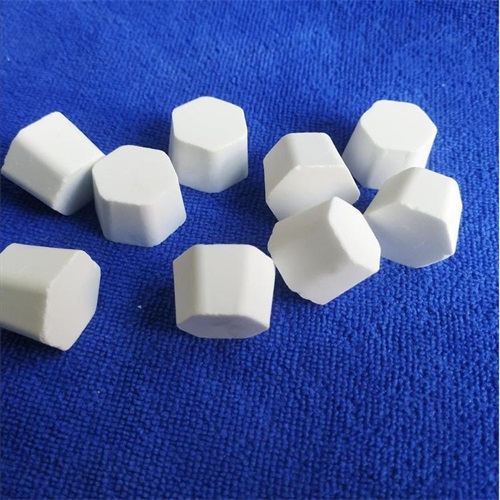Cylindrical alumina ceramic tube shell parts are tubular structural components made from high-purity alumina (Al ₂ O3) powder through isostatic pressing, high-temperature sintering (1600-1800 ℃), and precision machining processes. Its core features include:
High purity material: alumina content ≥ 95%, impurity content less than 0.1%, ensuring material stability;
Precision dimension control: outer diameter tolerance ± 0.02mm, wall thickness uniformity ≤ 0.05mm, meeting high-precision assembly requirements;
Excellent physical performance:
High temperature resistance: Long term use temperature up to 1600 ℃, short-term temperature resistance up to 1800 ℃;
Insulation: Volume resistivity>10 ¹⁴Ω· cm, withstand voltage strength>20kV/mm;
Corrosion resistance: resistant to acid, alkali, salt spray, and organic solvent erosion, suitable for harsh chemical environments;
High hardness: Mohs hardness level 9, with wear resistance 3-5 times that of metals.
Typical appearance: Smooth cylinder, both ends can be machined into flat, chamfered or threaded structures, supporting inner hole polishing (Ra ≤ 0.2 μ m) or coating treatment.
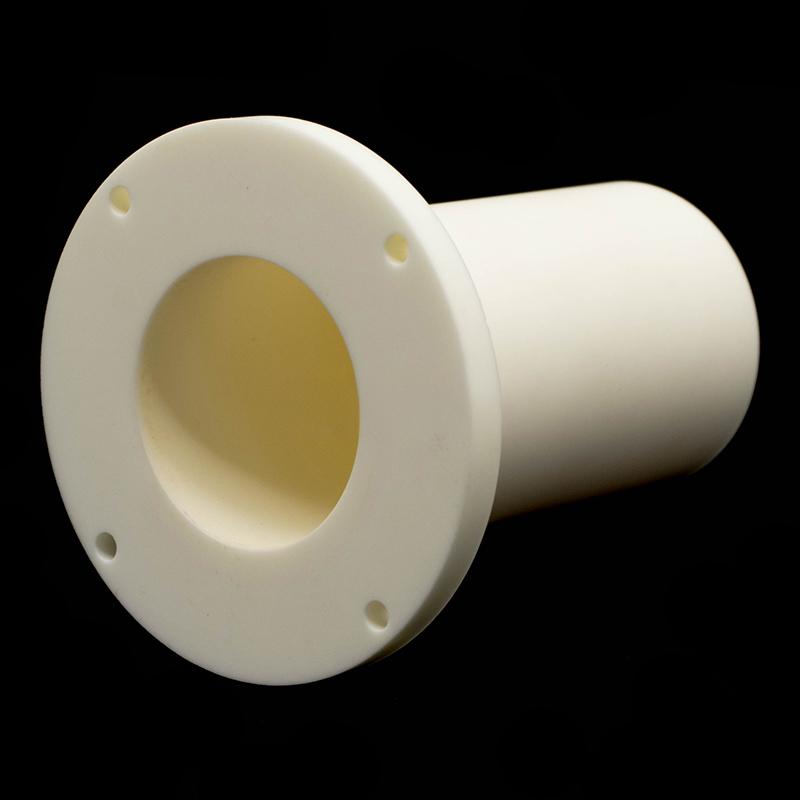
Core application scenario: Key components for solving industry pain points
- Electronic packaging and power devices: efficient heat dissipation and insulation protection
Application cases: IGBT modules, LED chip packaging, high-power resistor housings.
Problem solved:
Thermal runaway: The thermal conductivity of alumina is 25-30W/(m · K), which can quickly dissipate the heat of the chip and avoid performance degradation caused by overheating;
Electrical breakdown: high insulation isolation of high-voltage circuits to prevent arc discharge and enhance equipment safety;
Environmental adaptability: resistant to moisture and salt spray, extending the lifespan of outdoor electronic devices.
Effect data: After adopting the electronic control system of a certain new energy vehicle, the module failure rate was reduced by 60%, and the service life was extended from 5 years to over 8 years. - Semiconductor manufacturing equipment: ultra clean environment and precision control
Application cases: wafer transfer chamber, vacuum coating machine components, lithography machine alignment system.
Problem solved:
Metal pollution: Ceramic materials have no metal ion precipitation, avoiding contamination of silicon wafer surfaces;
Thermal expansion matching: The coefficient of linear expansion is 7.2 × 10 ⁻⁶/℃, which is close to that of silicon material and reduces cracking caused by thermal stress;
Vacuum sealing: The surface is dense without pores, and the vacuum leakage rate is less than 1 × 10 ⁻¹¹ Pa · m ³/s.
Effect data: After being used in a 12 inch wafer fab, the product yield increased by 15% and the equipment maintenance cycle was extended by three times. - Chemical and energy equipment: corrosion resistance and long service life
Application cases: Corrosive fluid transport pipelines, fuel cell electrolyte membranes, high-temperature reactor liners.
Problem solved:
Corrosion of media: resistant to all acids and bases except hydrofluoric acid (HF), replacing stainless steel to reduce costs;
High temperature aging: Strength retention rate>90% at 1600 ℃ to avoid softening and deformation of metal tube shells;
Wear protection: Smooth inner wall (Ra ≤ 0.1 μ m) reduces fluid resistance and lowers pumping energy consumption.
Effect data: After adopting the heat exchanger in a certain petrochemical enterprise, the annual maintenance cost decreased from 2 million yuan to 500000 yuan, and the downtime was reduced by 80%. - Medical and Bioengineering: Safety and Compatibility
Application cases: X-ray tube target base, artificial joint implant, cell culture reactor.
Problem solved:
Biological toxicity: Complies with ISO 10993 biocompatibility standards, with no heavy metal precipitation;
Image interference: Non magnetic materials to avoid MRI examination artifacts;
Sterilization resistance: capable of withstanding over 1000 cycles of high temperature and high pressure steam sterilization at 134 ℃.
Effect data: After being adopted by a certain orthopedic implant manufacturer, the postoperative infection rate decreased from 3% to 0.5%, and the recovery period of patients was shortened by 20%.
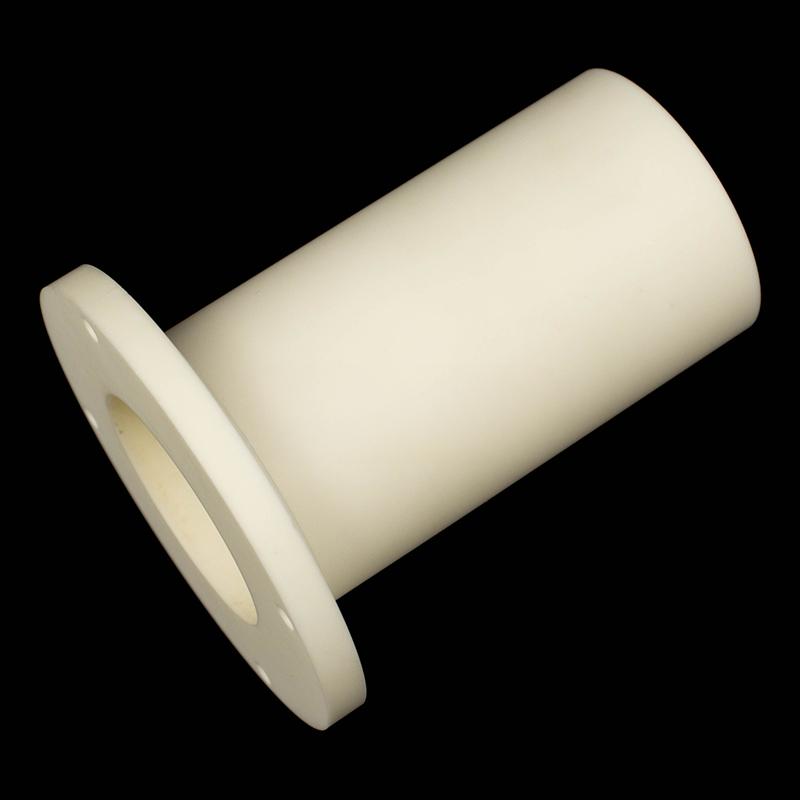
Customized service: full process support from design to mass production
- Material formula customization
Optional ingredients: Adding magnesium oxide (MgO) to inhibit grain growth and enhance thermal shock resistance; Or doping yttrium oxide (Y ₂ O3) to improve fracture toughness.
Performance adjustment: Adjust the alumina content (95% -99.7%) according to demand to balance cost and performance. - Customization of structural dimensions
Parameter Range:
Outer diameter: 2mm-200mm;
Length: 5mm-1000mm;
Wall thickness: 0.5mm-20mm;
Special structures: conical tube, porous tube, flanged end cap, etc.
Processing accuracy: Supports high-precision processes such as CNC grinding, laser drilling, and micro hole polishing. - Customized surface treatment
Coating options:
Metalization: Nickel coating (thickness 1-10 μ m) is used for brazing connections;
Glass glaze: improves acid and alkali resistance;
Anti stick coating: reduces fluid adhesion.
Surface roughness: Ra0.05 μ m-Ra3.2 μ m adjustable. - Rapid prototyping and mass production
Sampling cycle: 7-15 days to complete design verification;
Mass production capacity: starting from 100000 pieces per month, supporting phased delivery of bulk orders;
Quality inspection standards: Through 12 rigorous tests including X-ray inspection, compression testing, insulation resistance testing, etc.
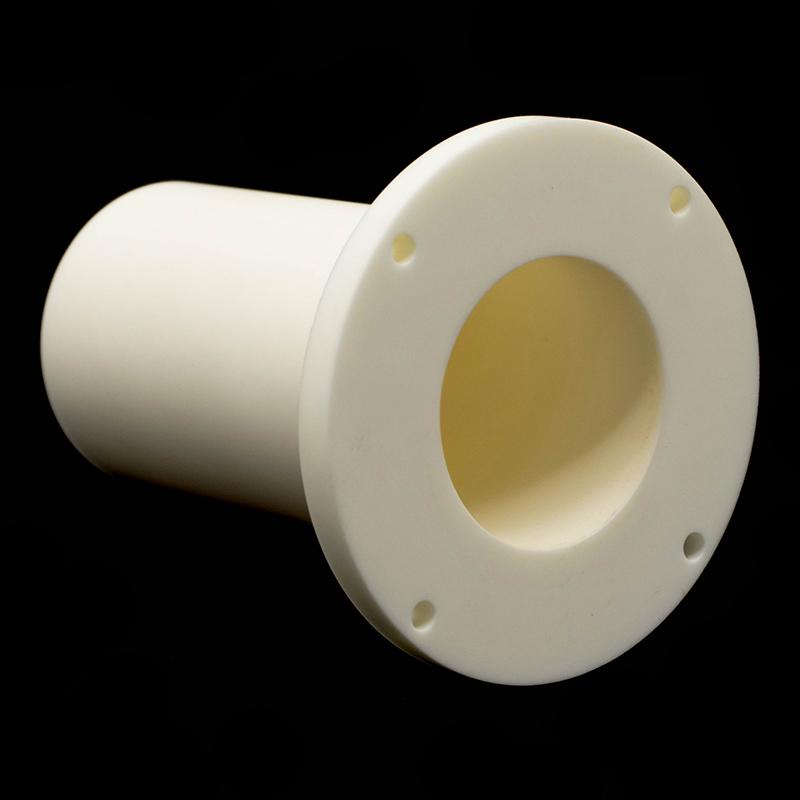
Selection guide: How to choose the most suitable alumina ceramic tube shell?
Temperature requirements:
Long term use<1200 ℃: optional 95% alumina; Long term use at 1200-1600 ℃: 99% alumina is recommended; Short term impact>1600 ℃: High purity (99.7%) or stabilizer needs to be customized.
Mechanical strength:
Static bearing capacity: standard alumina tube shell can meet the requirements;
Dynamic impact: It is necessary to increase the wall thickness or choose zirconia toughened alumina (ZTA).
Chemical environment:
Strong acid (such as concentrated sulfuric acid): glass glaze coated pipe shells are preferred;
Strong alkali (such as NaOH): Customized zirconia ceramic tube shell is required.
Cost sensitivity:
High cost-effectiveness: 95% alumina;
Extreme performance: 99.7% alumina or composite material.
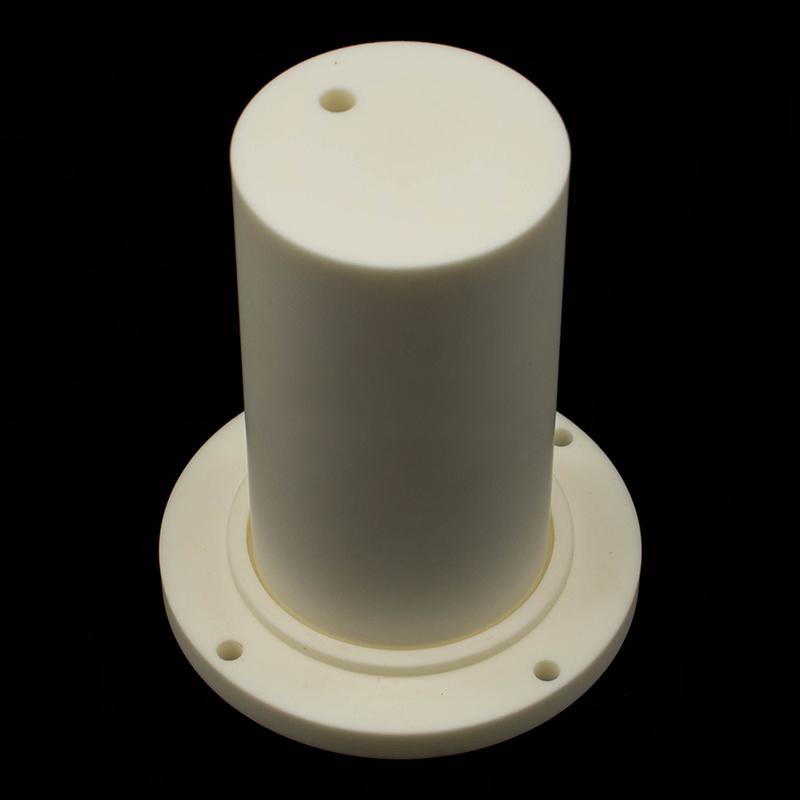
Cylindrical alumina ceramic tube shell components have become core components in fields such as electronics, chemical engineering, and healthcare due to their high temperature resistance, insulation, and corrosion resistance. Through customized services, we can accurately match diverse needs from laboratory prototypes to large-scale production. Whether it is improving equipment reliability, reducing maintenance costs, or breaking through technical bottlenecks, alumina ceramic tube shells are an ideal solution.
Brudeze Ceramics supplies and sells a wide range of high-quality quartz glass, including alumina ceramics, zirconia ceramics, silicon nitride ceramics, aluminum nitride ceramics, silicon carbide ceramics, boron carbide ceramics, bioceramics, machinable ceramics, etc. We can meet the customization requirements of various ceramic products.
Tags: boron carbide ceramics
CATEGORIES
LATEST NEWS
- What are the advantages of ...
- The manufacturing method of...
- Application scope of zircon...
- What are the difficulties i...
- What are the advantages of ...
- Application of Zirconia Cer...
- What are the applications o...
- What are the process method...
- What are the applications o...
- Where is the wide applicati...


